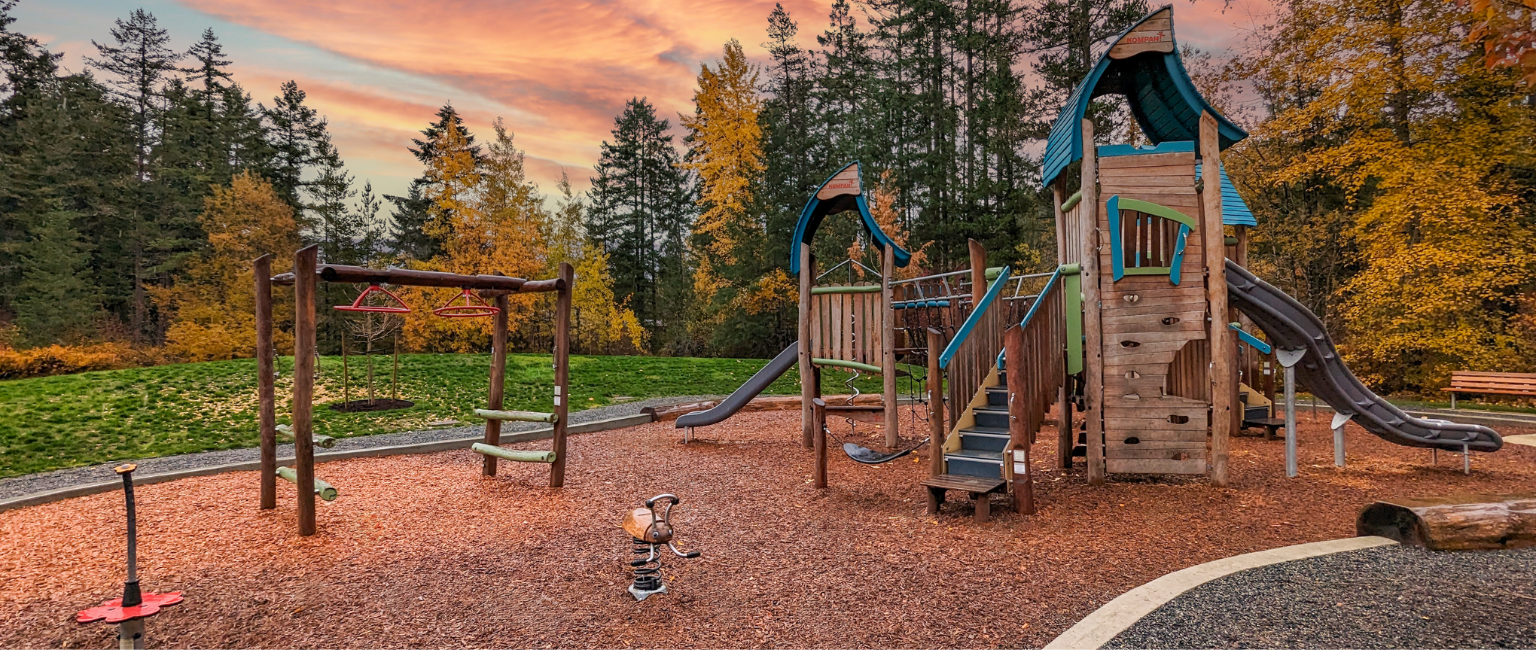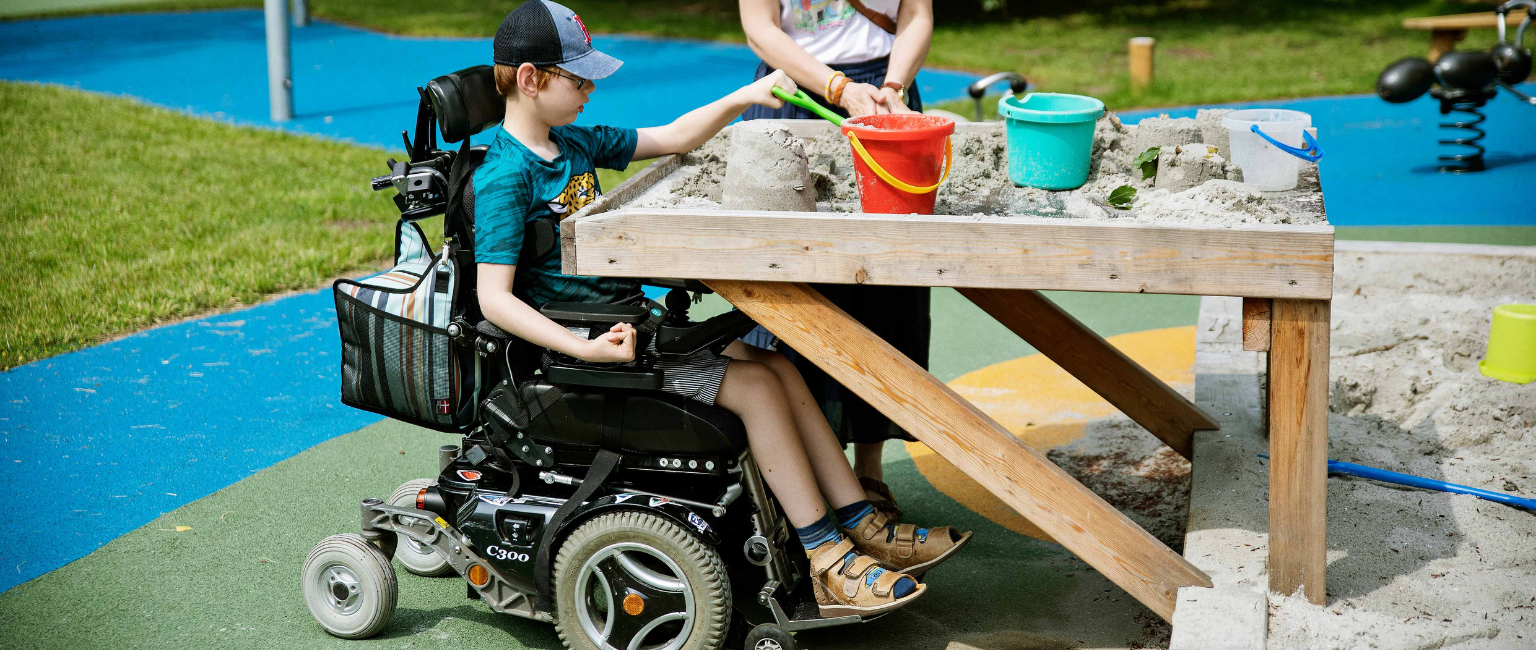Protecting Kids & Enhancing Play: Why Safe Playground Surfacing Matters

When it comes to the construction of new parks and playgrounds or the renovations of existing park and playground spaces, one of the most important factors to consider is safety. While most would immediately start thinking about the safety of the play equipment itself, there are lots of other elements that go into a new park or playground build that also have an impact on the overall safety of the play space.
Playground surfacing is one of those elements, and one that should be taken seriously! Used under play equipment with the intention of protecting children from fall injuries, safe playground surfacing is an essential part of any playground. With several options to choose from - each having their own pros and cons - taking the time to properly research and choose the right type of playground surfacing for your playground can help create a fun play space that will keep kids coming back for more.
What Makes Playground Surfacing “Safe”?
Playground safety standards and regulations will likely differ based on your location, so reading up on the specifics for your area is a great place to get a sense of what is considered safe in your area. Safe surfacing aims to provide a cushioned, impact-absorbing base that helps minimize injuries from falls. Keeping accessibility in mind is also important, as it adds to the overall inclusivity of a play space and creates play opportunities for people of all ages and abilities.
Abiding by the critical fall height standards is crucial when designing a new playground. Fall height, according to the ASTM, is the vertical distance between a play structure or surface, and the ground beneath it. This measurement is used to determine whether a playground’s safety surfacing meets impact attenuation requirements—meaning it can help reduce the risk of head injury in the event of a fall.
- For a slide, fall height is usually measured from the highest accessible point before decent.
- For swings, it's from the pivot point of the swing to the surfacing directly below.
- For climbers, it's from the highest designated standing surface.
Abiding by the fall height standards helps reduce the risk of serious injuries to children on the playground, and using the appropriate surfacing materials will help meet these requirements throughout your playground design.

Types of Playground Safety Surfacing
When it comes to choosing the right kind of playground surfacing for your project, there are lots of great options to choose from. Whether you’re looking for something to suit a smaller budget and be less-maintenance or are wanting to make the investment in a surfacing that promotes accessibility for all, Parkworks can help you find the perfect solution for your space, including these three common surfacing choices:
- Pour-in-place (PIP) rubber – Durable and soft, pour-in-place rubber is often a great choice for playground surfacing, as it is incredibly long-lasting and boasts great accessibility. ADA-compliant and shock-absorbing, pour-in-place rubber creates a smooth, cushy play surface that creates a softer landing pad for kids as they play, compared to other surfacing types. It also requires less frequent and less intensive maintenance compared to EWF, pea gravel, and sand.
- Engineered Wood Fiber (EWF) - Often a popular choice for projects looking to keep their costs low while still providing a natural looking play surface for kids to enjoy. It is very absorbant of water and can be topped up throughout the year as needed to maintain required fall heights from playground equipment. While EWF does meet the basic ADA accessibility guidelines, it does not create a flat surface, which could cause challenges for those who use mobility aids such as wheelchairs or walkers.
- Aquatic Splash Pad Surfacing - When it comes to the splash pads installed by our splashiest partner, Waterplay, people often assume that they are limited to plain, slip-resistant surfacing options such as concrete. But there are other amazing aquatic play surfaces available, such as LifeFloor. LifeFloor provides accessible, cushioned, and playful aquatic surfacing for splash pads of all shapes and sizes! With a wide range of colours and fun themes, LifeFloor can bring your splash pad to life and create a vibrant, accessible play space for all.

Choosing the right surfacing for your space
There is a lot more that goes into choosing the right surfacing for your play space than most would expect, but taking all factors into consideration is essential in creating a fun space that everyone can enjoy. Budget, maintenance considerations, climate, and traffic levels are all important things to keep in mind when designing your play space.
If you’re anticipating the play space to be frequently used, choosing a surfacing that is durable and will withstand the high foot-traffic is essential. If you want to achieve a certain design aesthetic, whether that be a colourful, themed surface or a more natural play area, then be sure to factor that into your design and budget. Climate can also play a role in the type of surfacing you choose. If you live somewhere with a harsher climate, make sure that the surfacing you choose will stand up to the elements. Taking these factors into account will help you choose the best surface for your unique play space.

Key Benefits of Safe Playground Surfacing
While maintaining ADA compliance and safe fall heights are key when designing a play space, there are a few other key benefits that come from choosing safe playground surfacing. Longevity and the overall maintenance cost of the surfacing is important to consider, as some surfacing will require more upkeep than others. Accessibility is another huge factor. If you’re wanting to create a truly inclusive and accessible play space, then you’ll want to choose surfacing that is going to allow for mobility aids to easily maneuver through the space.
The overall impact of surfacing on the environment is also important to consider. If you want a natural product that will have minimal impact on the environment, then choosing something like Engineered Wood Fibre might be a better option for your project.

So why does choosing safe playground surfacing matter? Safe, inclusive surfacing helps create equitable play opportunities for individuals of all ages and abilities. The right surfacing can help enhance both sensory and multi-generational play, which creates a vibrant and robust play experience for those who visit the playground. A well thought-out and designed play space can become the focal point of a community, providing a fun hub for families of all types to come together, play collaboratively, and create long-lasting memories and practical skills that will benefit them throughout their lives.
